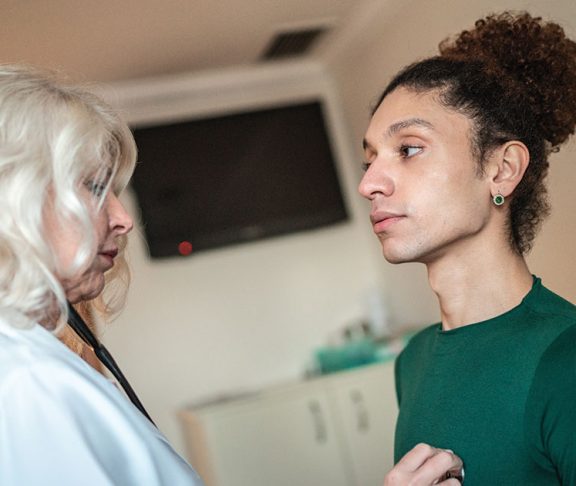
Brian Hujdich
Executive Director, National Coalition for LGBTQ+ Health
If we want to improve healthcare outcomes for LGBTQ+ people, there are some things that everyone should learn first.
1. LGBTQ+ healthcare needs and concerns aren’t monolithic
Just as straight people don’t all share the same health experiences, neither do LGBTQ+ individuals. The healthcare system needs to consider all the various and individual factors that make up health, wellness, and experience in ways that aren’t identity-defining or diagnosis-limiting.
For example, transgender people may face barriers to specific health care needs like hormone therapy that cisgender people do not. And HIV positive gay and bisexual men are more than the sum total of their viral loads. There are just as many specific health needs of LGBTQ+ people as there are LGBTQ+ people, which is about 10 million American adults according to recent surveys.
HIV Testing can change everything. Get started and know your status, today.
2. Youth homelessness, substance use disorders, and suicide disproportionately affect LGBTQ+ individuals
LGBTQ+ youth experience more homelessness with far greater risks to their health, such as substance use and suicidality, than their cisgender, heterosexual peers. Black and Hispanic youth in particular are overrepresented among unstably housed LGBTQ+ youth, with racial discrimination further compounding the effects of sexual orientation-based discrimination.
Stigma and lack of mental health provider training also serve as barriers to consistent, high-quality medical care and supportive services for this vulnerable population.
3. Ongoing medical education can help healthcare providers reach LGBTQ+ and other underserved populations
Despite great strides in LGBTQ+ visibility and rights over the last decade, healthcare access remains an arena where LGBTQ+ people continue to face biases and other barriers to health. Continuing medical education that trains providers about the specific healthcare needs of LGBTQ+ communities can improve the ways providers integrate culturally competent and accessible care.
The same goes for the training of office staff. From the front desk to the billing department, the more that staff are trained about the specific needs of their patients, the more welcoming and effective these access points become.
4. Social support and mental health are vital
Mental and behavioral health matters as much as clinical and physical health, and LGBTQ+ individuals are more likely to experience bullying and discrimination based on sexual orientation, gender identity, and gender expression. LGBTQ+ community organizations, mental health services, and advocacy efforts that spearhead acceptance and affirmation go a long way towards normalizing LGBTQ+ people’s health needs. Achieving health equity is a synchronous endeavor that requires care for the whole person.
5. LGBTQ+ health outcomes align with public policy
Historically, LGBTQ+ individuals have had few legal protections from discrimination when seeking healthcare. The Equality Act, passed by the House of Representatives in February 2021, would uniformly apply an anti-discrimination law to services and programs receiving federal funding in all states. If signed into law, healthcare providers would be required to provide the same standard of care to all patients regardless of sexual orientation or gender identity.
The Equality Act faces a challenge in a senate that is split by party lines, and it’s unclear whether it has the support to cross the President’s desk. If you want to get involved, contact your senator’s offices and let them know you support LGBTQ+ health.

